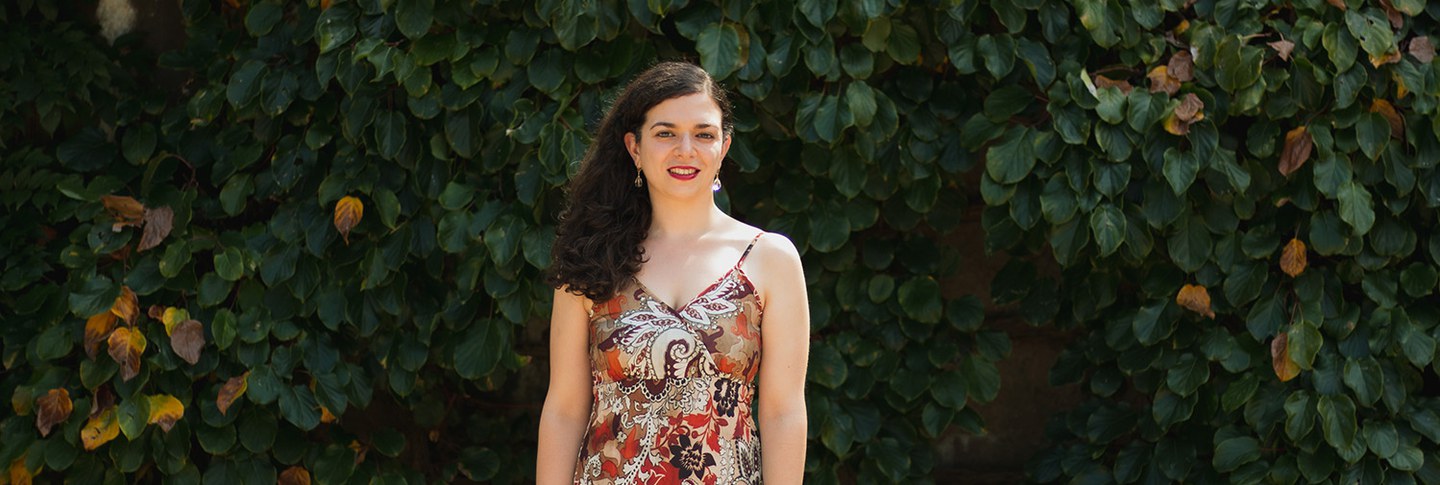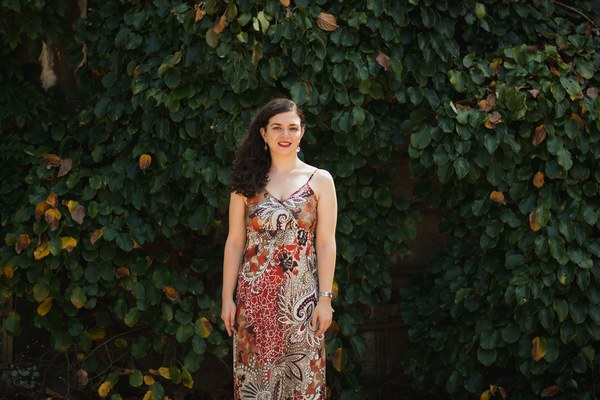Arianna Gullo, who until this summer was a lecturer in classics at the University of Glasgow, and takes up a Leverhulme Early Career Fellowship at the University of Newcastle in May 2020, is a fellow in Byzantine Studies. Her research report, “Ekphrasis and Epigram in the Age of Justinian,” outlined an interdisciplinary approach to studying transformations in Byzantine art by attending to links between art, text, and reader.
Q&A with Arianna Gullo
How would you encounter an epigram, whether in classical antiquity or today?
In everyday life, we are surrounded by epigrams. We all bury our dead, and then usually we adorn their funerary monuments with inscriptions, that is, reflecting the same custom the Greeks and Romans had. Or think about statues or monuments honoring people fallen during the Second World War, standing in a square or somewhere quite conspicuous and visible. The inscription carved on the base of the statue or the monument? That’s another epigram. There can be epigrams in a church to commemorate its erection, or on an official public building remembering when it was built and why. For example, right outside the Dumbarton Oaks library, on the opposite wall, there is an inscription with a statement by the cofounder Mildred Bliss. That’s an epigram!
Consider the act of writing a sentence or two in a card to accompany a present for a friend—that might be a votive epigram, an inscription made to accompany an offering. In classical antiquity, people used to worship a deity by providing offerings, often accompanied by an inscription. We are just repeating the same kind of gesture they used to make.
What does your research into epigrams reveal about the kind of art—now lost—that Byzantines would have seen every day?
For a long time, late antique and Byzantine epigrams, especially those only transmitted through manuscripts, were just considered literary texts—completely detached from the monumental context. I always found that very unfair. The epigrams I study, originally collected in the so-called Cycle of Agathias, are the only extant source we have about the art objects on which they were inscribed. I have not yet completed my catalogue, but I would estimate the epigrams describe 100–150 works of art from the age of the emperor Justinian (527–565). In fact, I expect to find more during my research.
Without these epigrams, we would be completely ignorant that in the sixth century in Constantinople, there were, say, these works in prominent public places like the Hippodrome or the Augustaion. We cannot dismiss this evidence from literary texts, just as we would not dismiss evidence from pottery, stone, marble. It’s crucial.
These epigrams are not precise in describing the works of art. But they don’t need to be. The author knew that the reader was going to build up in his mind a visualization of the statue or monument—even if the statue was not immediately recognizable—because he could rely on his visual memory of common iconographic patterns. If the passerby stopped before an inscribed honorific stela, even without reading the inscription, recognizing immediately the person carved, he could have said, “of course that’s Justinian, because it’s an emperor seated on a bronze horse.”
Why are late antique scholars interested in the kind of interdisciplinary research you do?
Thankfully scholars now consider late antiquity a very important phase in the development of Greek culture, leading to the Byzantine era. This work contributes to the explosion of late antique studies. Within that sphere, a lot of scholars are interested in the relationship between art and text. Then it’s fascinating how these texts exploit all the feelings and senses, basically making the reader participate in the description. There is a unique relationship not just between the art and the text but also between the text and the reader.
That’s why my project is an interdisciplinary one. This year at Dumbarton Oaks, there are luckily many art historians as fellows. I will surely benefit from dialogue with them, since I am mostly a philologist, not an archaeologist or an art historian. We have so little evidence of material objects that these texts become the only source for us to reconstruct parts of everyday life in sixth-century Constantinople. We should try to be as resourceful as possible to reconstruct what is lost.
Julia Ostmann is postgraduate writing and reporting fellow at Dumbarton Oaks. Photo by Elizabeth Muñoz Huber, postgraduate digital media fellow.

